
|
|
Font Size:
|
||||
|
|
|
|
||||
STATISTICAL BRIEF #245:
Average Number of Total (Including Refills) and Unique Prescriptions by Select Person Characteristics, 2006
Highlights
- In 2006, the average number of unique and total (including refills) outpatient prescription purchases for persons in the U.S. civilian noninstitutionalized population with one or more prescription drug purchases was 4.0 and 16.5 prescription purchases, respectively.
- During 2006, of persons with at least one prescribed drug purchase, persons under age 65 with public insurance only, on average, had a higher number of unique prescription purchases (4.1 purchases) and a higher number of total prescription purchases (18.4 purchases) than those under age 65 with any private insurance (3.4 purchases and 12.0 purchases, respectively) and those under age 65 that were uninsured (2.9 unique purchases and 10.6 total, respectively).
- In 2006, for persons age 65 and over with at least one prescribed drug purchase, persons with Medicare and public insurance, on average, had a higher number of unique prescription purchases(7.1 purchases) and a higher number of total prescription purchases (41.2 purchases) when compared to those age 65 and over with Medicare and any private insurance (6.5 unique purchases and 30.8 total prescription purchases, respectively) and those age 65 and over with Medicare only (6.1 unique purchases and 32.8 total purchases, respectively).
- In 2006, of those with at least one prescription drug purchase, on average, the poor and the near poor/low income had the highest number of total prescription purchases (19.6 and 19.7 purchases, respectively) and unique prescription purchases (4.3 and 4.3 purchases, respectively) compared to persons with middle income (15.5 total purchases and 3.8 unique purchases) and persons with high income (15.1 total purchases and 3.9 unique purchases).
Introduction
This Statistical Brief provides information as reported by households in the U.S. civilian noninstitutionalized (community) population for calendar year 2006 on the average number of total outpatient prescription purchases (including refills) and the average number of unique outpatient prescription purchases for those with at least one prescription drug purchase by select person characteristics. Unique prescriptions were defined by their unique active ingredient or unique active ingredients. Drug mentions were grouped according to their unique active ingredient or unique active ingredients, e.g., all drugs with the same unique active ingredient were considered one unique drug. This Brief will include comparisons by age, race, sex, insurance status, and poverty status.The estimates in this Brief are derived from the Household Component of the 2006 Medical Expenditure Panel Survey (MEPS-HC). Only prescribed medicines purchases in an outpatient setting are included in the estimates. Insulin and diabetic supplies and equipment are included in MEPS prescribed medicines estimates. Over-the-counter medicines are excluded from these estimates as are prescription medicines administered in an inpatient setting or in a clinic or physician's office. All differences discussed in the text are statistically significant at the 0.05 percent level.
Findings
In 2006, of the 299.3 million persons in the U.S. civilian noninstitutionalized population, 187.5 million persons purchased one or more prescription drugs during the year. Of the 187.5 million persons with one or more prescription drug purchases in 2006, the average number of unique prescription purchases was 4.0 and the average number of total prescription purchases, including refills, was 16.5.For persons with one or more prescription drug purchases in 2006, on average, the number of unique prescriptions increased as age category increased for persons ages 5-84 (age category 5-17 (2.2 unique prescriptions), age category 18-44 (2.9 unique prescriptions), age category 45-64 (4.7 unique prescriptions), age category 65-74 (6.3 unique prescriptions), and age category 75-84 (6.7 unique prescriptions)). However, the average number of unique prescriptions decreased when comparing persons in age category 75-84 and persons in age category 85 and older (6.7 versus 6.3 unique prescriptions, respectively). There was no difference in the average number of unique prescriptions when comparing persons in age category 0-4 with persons in age category 5-17.
Moreover, on average, the total number of prescription purchases (including refills) increased as age category increased for persons ages 0-74 (age category 0-4 (3.9 total prescriptions), age category 5-17 (5.9 total prescriptions), age category 18-44 (9.3 total prescriptions), age category 45-64 (21.6 total prescriptions), and age category 65-74 (31.6 total prescriptions)). However, on average, the total number of prescriptions did not change significantly when comparing persons in age categories 65-74, 75-84, and 85 and older (figure 1).
In 2006, of those with at least one prescription drug purchase, on average, white non-Hispanics had the highest number of unique prescription purchases (4.2 prescription purchases) compared to black non-Hispanics (3.9 prescription purchases), Hispanics (3.2 prescription purchases), and other non-Hispanics (3.5 prescription purchases). Hispanics had the lowest number of unique prescriptions on average. In addition, when comparing the average number of total prescription purchases in 2006 by race/ethnicity, white non-Hispanics and black non-Hispanics had a higher average (17.5 and 16.8 total prescription purchases, respectively) compared to the average for Hispanics and other non-Hispanics (12.0 total prescription purchases and 13.1 total prescription purchases) (figure 2).
Of those with at least one prescribed drug purchase in 2006, males, on average, had a lower number of unique and total prescription purchases than women (3.7 unique prescription purchases versus 4.2 unique prescription purchases and 15.1 total prescription purchases versus 17.6 total prescription purchases, respectively) (figure 3).
During 2006, for persons under age 65 with at least one prescribed drug purchase, persons with public insurance only, on average, had a higher number of unique prescription purchases (4.1 prescription purchases) and a higher number of total prescription purchases (18.4 prescription purchases) when compared to those under age 65 with any private insurance (3.4 prescription purchases and 12.0 prescription purchases, respectively) and those under age 65 that were uninsured (2.9 prescription purchases and 10.6 prescription purchases, respectively). In addition, on average, those under age 65 with any private insurance had a higher number of unique and total prescription purchases compared to those under age 65 that were uninsured (figure 4).
In 2006, for persons over age 65 with at least one prescribed drug purchase, persons with Medicare and public insurance, on average, had a higher number of unique prescription purchases (7.1 prescription purchases) and a higher number of total prescription purchases (41.2 prescription purchases) when compared to those over age 65 with Medicare and any private insurance (6.5 prescription purchases and 30.8 prescription purchases, respectively) and those age 65 and over with Medicare only (6.1 prescription purchases and 32.8 prescription purchases, respectively). In addition, on average, those age 65 and older with Medicare and any private insurance had a higher number of unique prescription purchases compared with those over age 65 with Medicare only (figure 5).
During 2006, of those with at least one prescription drug purchase, on average, the poor and near poor/low income persons had the highest number of total prescription purchases (19.6 and 19.7 prescription purchases, respectively) compared to persons with middle income (15.5 prescription purchases) and persons with high income (15.1 prescription purchases). Moreover, on average, the poor and near poor/low income persons had a higher number of unique prescription purchases (4.3 and 4.3 prescription purchases, respectively) when compared to those with middle income (3.8 prescription purchases) and those with high income (3.9 prescription purchases) (figure 6).
Data Source
The estimates in this Statistical Brief were derived from the MEPS HC-050: 2000 Full Year Consolidated Data File; HC-105: 2006 Full Year Consolidated Data File, and HC-102A: 2006 Prescribed Medicines File.Definitions/Methodology
Unique drug classificationUnique prescriptions were defined by their unique active ingredient or unique active ingredients. Drug mentions were grouped according to their unique active ingredient or unique active ingredients, e.g., all drugs with the same unique active ingredient were considered one unique drug.
Age
Age is the last available age for the sampled person. For most persons, this was their age at the end of the year.
Racial and ethnic classifications
Classification by race and ethnicity was based on information reported for each family member. Respondents were asked if each family member's race was best described as American Indian, Alaska Native, Asian or Pacific Islander, black, white, or other. They also were asked if each family member's main national origin or ancestry was Puerto Rican; Cuban; Mexican, Mexicano, Mexican American, or Chicano; other Latin American; or other Spanish. All persons whose main national origin or ancestry was reported in one of these Hispanic groups, regardless of racial background, were classified as Hispanic. Since the Hispanic grouping can include black Hispanic, white Hispanic, Asian and Pacific Islanders Hispanic, and other Hispanic, the race categories of black, white, Asian and Pacific Islanders, and other do not include Hispanic. Beginning in 2002, MEPS respondents were allowed to report multiple races, and these persons were included in the other non-Hispanic category. As a result, there was a slight increase in the percentage of persons classified in this category in 2002 compared with prior years.
Health insurance status
Individuals under age 65 were classified into the following three insurance categories:
- Any private health insurance: Individuals with insurance that provides coverage for hospital and physician care at any time during the year, other than Medicare, Medicaid, or other public hospital/physician coverage are classified as having private insurance. Medigap coverage is included in this category. Persons with TRICARE are also included. Insurance that provides coverage for a single service only, such as dental or vision, is not included.
- Public coverage only: Individuals are considered to have public coverage only if they met both of the following criteria:
- They were not covered by private insurance at any time during the year.
- They were covered by one of the following public programs at any point during the year: Medicare, Medicaid, or other public hospital/physician coverage.
- Uninsured: The uninsured are defined as persons not covered by Medicare, TRICARE, Medicaid, other public hospital/physician programs, or private hospital/physician insurance at any time during 2006. Individuals covered only by noncomprehensive state specific programs (e.g., Maryland Kidney Disease Program, Colorado Child Health Plan) or private single-service plans (e.g., coverage for dental or vision care only, coverage for accidents or specific diseases) are not considered to be insured.
- Medicare and private insurance: This category includes persons classified as Medicare beneficiaries and covered by Medicare and a supplementary private policy.
- Medicare and other public insurance: This category includes persons classified as Medicare beneficiaries who met both of the following criteria:
- They were not covered by private insurance at any point during the year.
- They were covered by one of the following public programs at any point during the year: Medicaid, other public hospital/physician coverage.
- Medicare only: This category includes persons classified as Medicare beneficiaries but not classified as Medicare and private insurance or as Medicare and other public insurance. This group includes persons who were enrolled in Medicare HMOs and persons who had Medicare fee-for-service coverage only. This category also includes a small number of people who were age 65 or older that did not report having Medicare.
Each year, persons were classified according to their family's income in terms of poverty status. In this report, poverty status is the ratio of the family's income to the Federal poverty thresholds, which control for the size of the family and the age of the head of the family. The following classification of poverty status was used:
- Poor: Persons in families with income less than 100 percent of the poverty line, including those who reported negative income.
- Near poor/low income: Persons in families with income over the poverty line through 200 percent of the poverty line.
- Middle income: Persons in families with income of over 200 percent to 400 percent of the poverty line.
- High income: Persons in families with income over 400 percent of the poverty line.
About MEPS-HC
MEPS-HC is a nationally representative longitudinal survey that collects detailed information on health care utilization and expenditures, health insurance, and health status, as well as a wide variety of social, demographic, and economic characteristics for the civilian noninstitutionalized population. It is cosponsored by the Agency for Healthcare Research and Quality and the National Center for Health Statistics.For more information about MEPS, call the MEPS information coordinator at AHRQ (301) 427-1656 or visit the MEPS Web site at http://www.meps.ahrq.gov/.
References
For a detailed description of the MEPS-HC survey design, sample design, and methods used to minimize sources of nonsampling error, see the following publications:Cohen, J. Design and Methods of the Medical Expenditure Panel Survey Household Component. MEPS Methodology Report No. 1. AHCPR Pub. No. 97-0026. Rockville, MD: Agency for Health Care Policy and Research, 1997. http://www.meps.ahrq.gov/mepsweb/data_files/publications/mr1/mr1.shtml
Cohen, S. Sample Design of the 1996 Medical Expenditure Panel Survey Household Component. MEPS Methodology Report No. 2. AHCPR Pub. No. 97-0027. Rockville, MD: Agency for Health Care Policy and Research, 1997. http://www.meps.ahrq.gov/mepsweb/data_files/publications/mr2/mr2.shtml
Cohen, S. Design Strategies and Innovations in the Medical Expenditure Panel Survey. Medical Care, July 2003: 41(7) Supplement: III-5-III-12.
Ezzati-Rice, TM, Rohde, F, Greenblatt, J, Sample Design of the Medical Expenditure Panel Survey Household Component, 1998-2007. Methodology Report No. 22. March 2008. Agency for Healthcare Research and Quality, Rockville, MD. http://www.meps.ahrq.gov/mepsweb/data_files/publications/mr22/mr22.shtml
Suggested Citation
Stagnitti, M. N. Average Number of Total (Including Refills) and Unique Prescriptions by Select Person Characteristics, 2006. Statistical Brief #245. May 2009. Agency for Healthcare Research and Quality, Rockville, MD. http://www.meps.ahrq.gov/mepsweb/data_files/publications/st245/stat245.shtmlAHRQ welcomes questions and comments from readers of this publication who are interested in obtaining more information about access, cost, use, financing, and quality of health care in the United States. We also invite you to tell us how you are using this Statistical Brief and other MEPS data and tools and to share suggestions on how MEPS products might be enhanced to further meet your needs. Please e-mail us at mepspd@ahrq.gov or send a letter to the address below:
Steven B. Cohen, PhD, Director
Center for Financing, Access, and Cost Trends
Agency for Healthcare Research and Quality
540 Gaither Road
Rockville, MD 20850
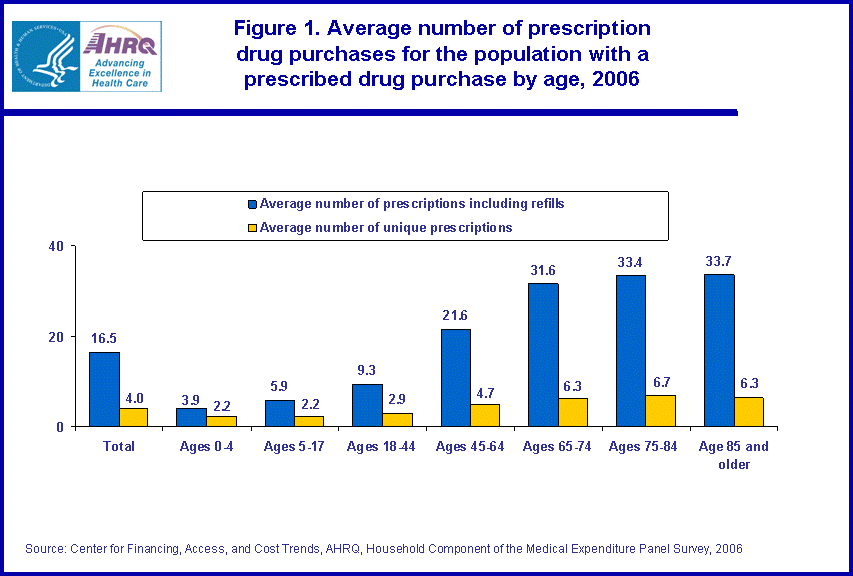 |
|||||||||||||||||||||||||||||||||||||||||||||
|
|||||||||||||||||||||||||||||||||||||||||||||
|
|
|||||||||||||||||||||||||||||||||||||||||||||
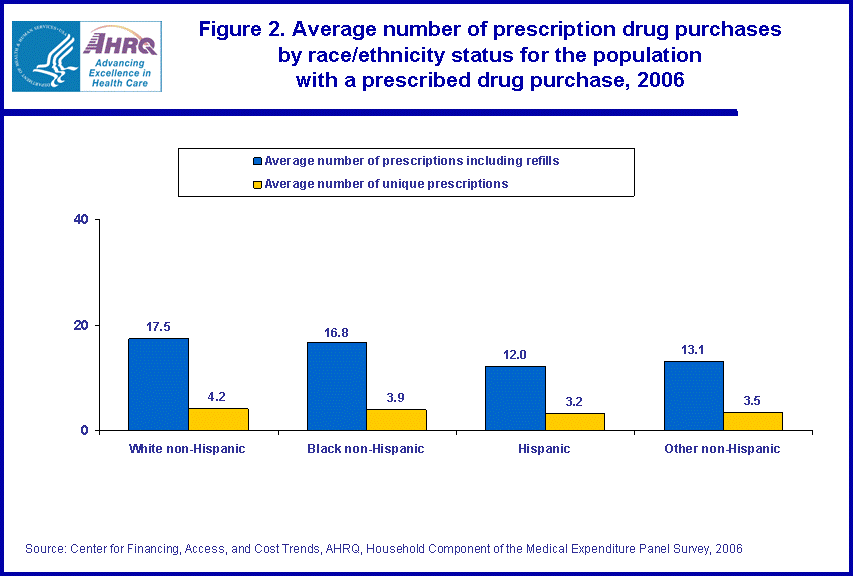 |
|||||||||||||||||||||||||||||||||||||||||||||
|
|||||||||||||||||||||||||||||||||||||||||||||
|
|
|||||||||||||||||||||||||||||||||||||||||||||
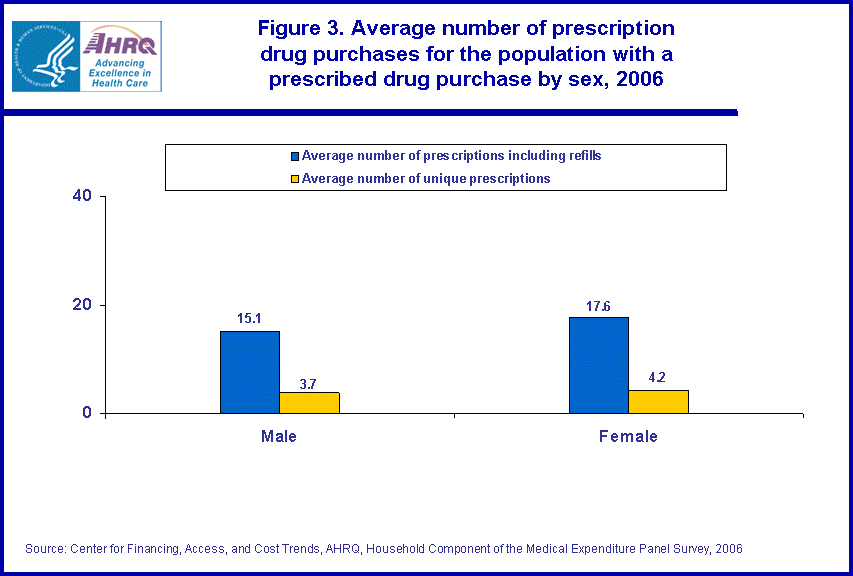 |
|||||||||||||||||||||||||||||||||||||||||||||
|
|||||||||||||||||||||||||||||||||||||||||||||
|
|
|||||||||||||||||||||||||||||||||||||||||||||
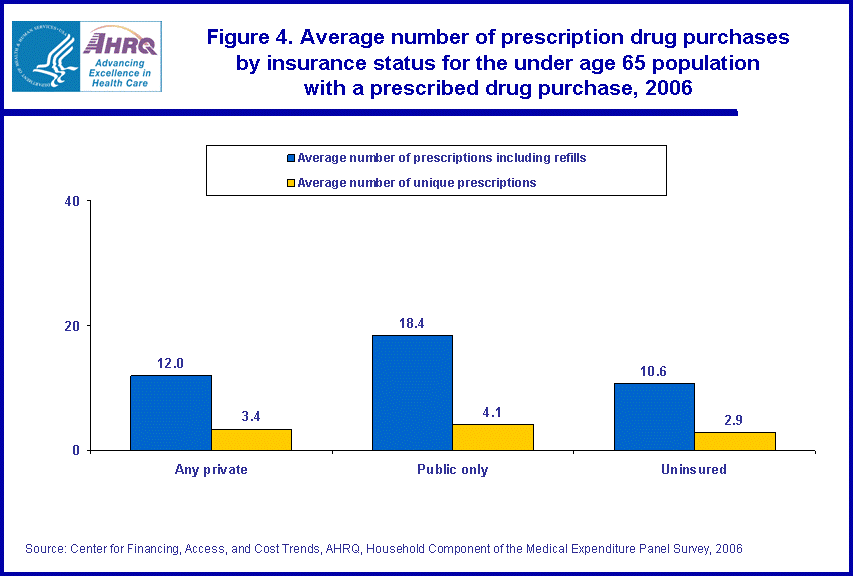 |
|||||||||||||||||||||||||||||||||||||||||||||
|
|||||||||||||||||||||||||||||||||||||||||||||
|
|
|||||||||||||||||||||||||||||||||||||||||||||
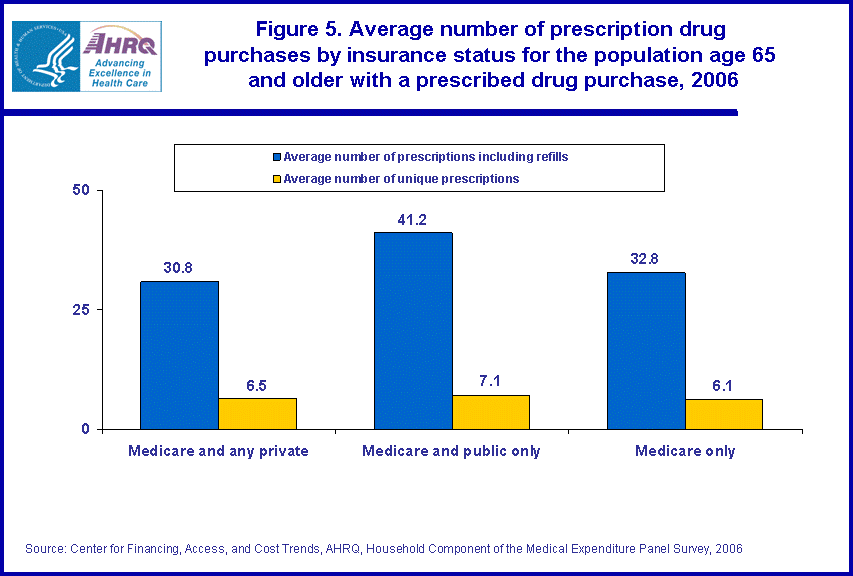 |
|||||||||||||||||||||||||||||||||||||||||||||
|
|||||||||||||||||||||||||||||||||||||||||||||
|
|
|||||||||||||||||||||||||||||||||||||||||||||
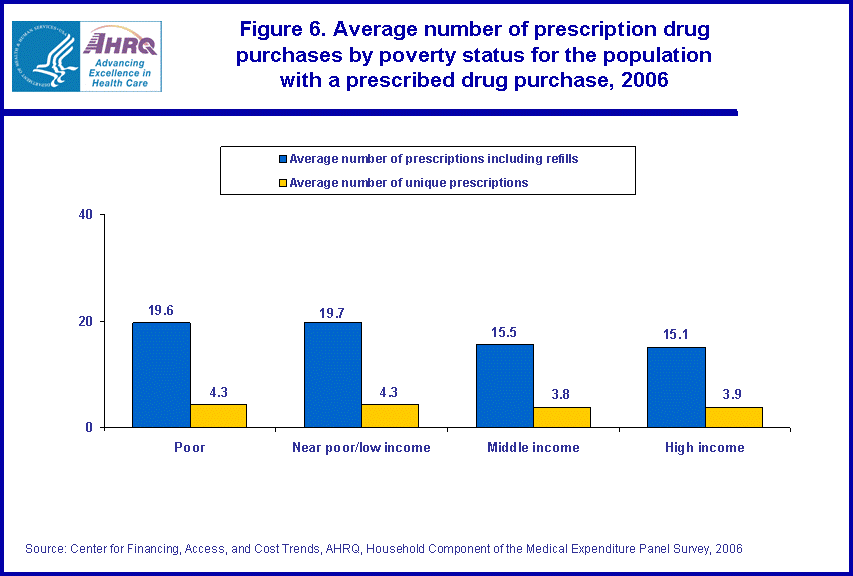 |
|||||||||||||||||||||||||||||||||||||||||||||
|
|||||||||||||||||||||||||||||||||||||||||||||
|
|
|||||||||||||||||||||||||||||||||||||||||||||


